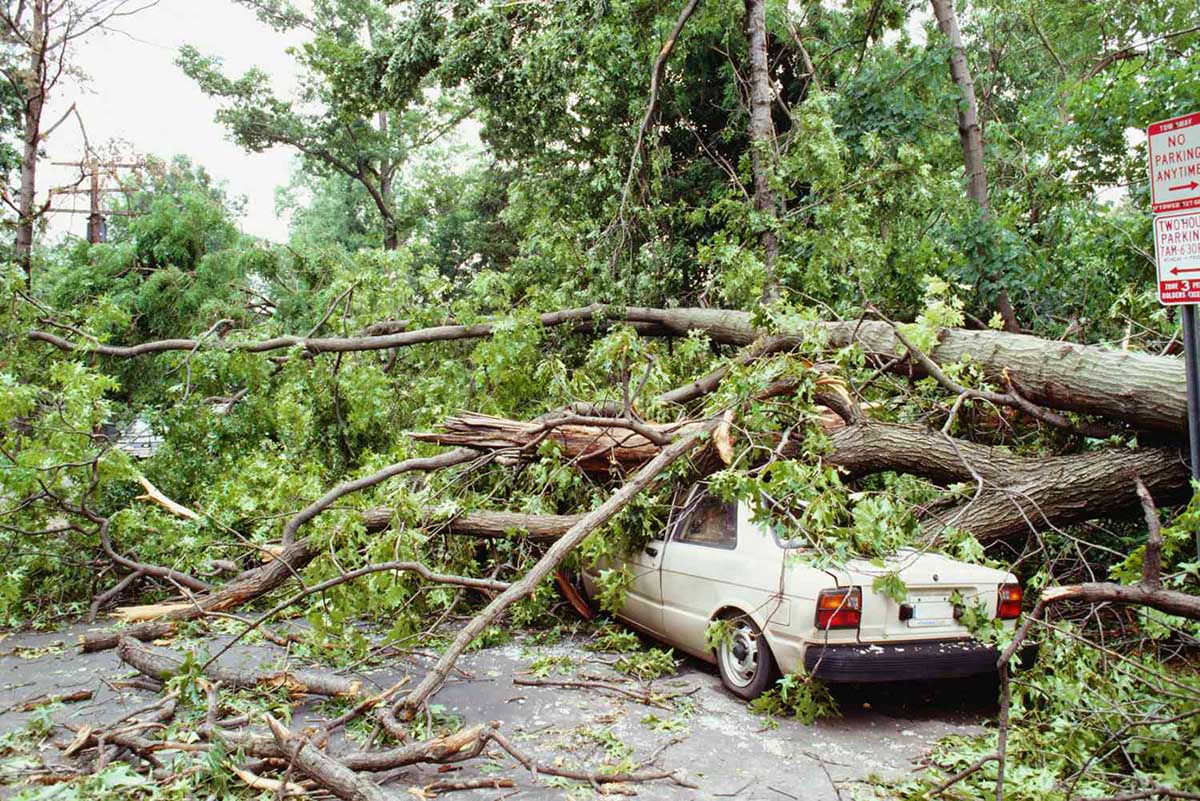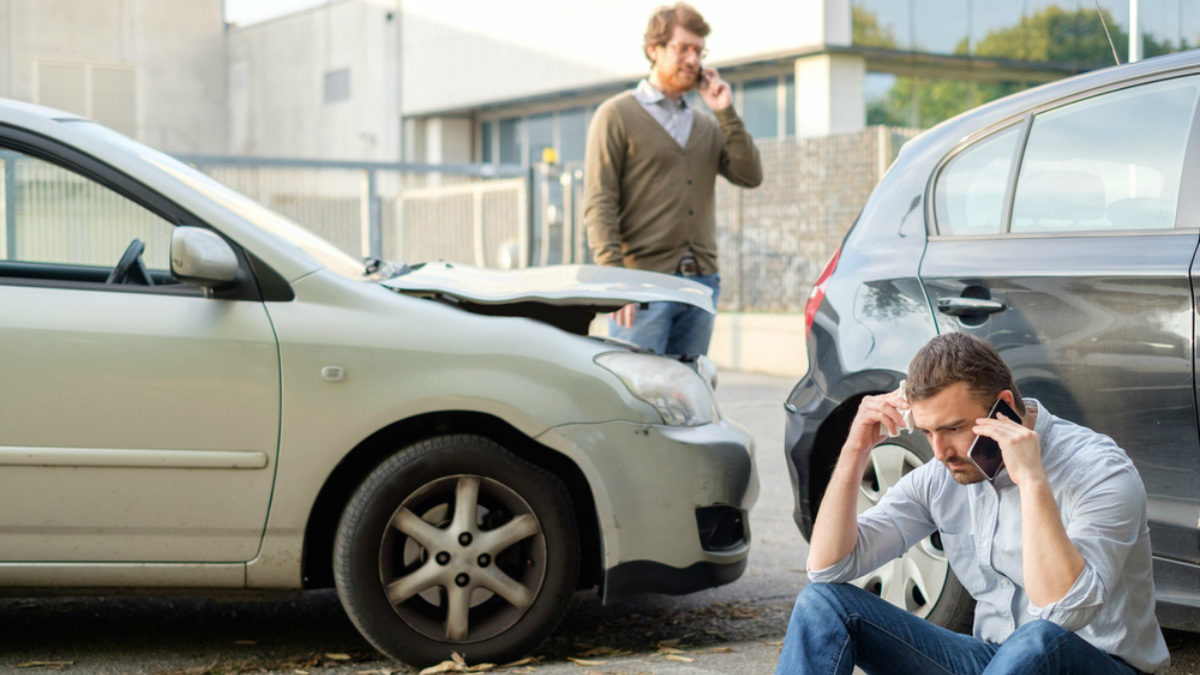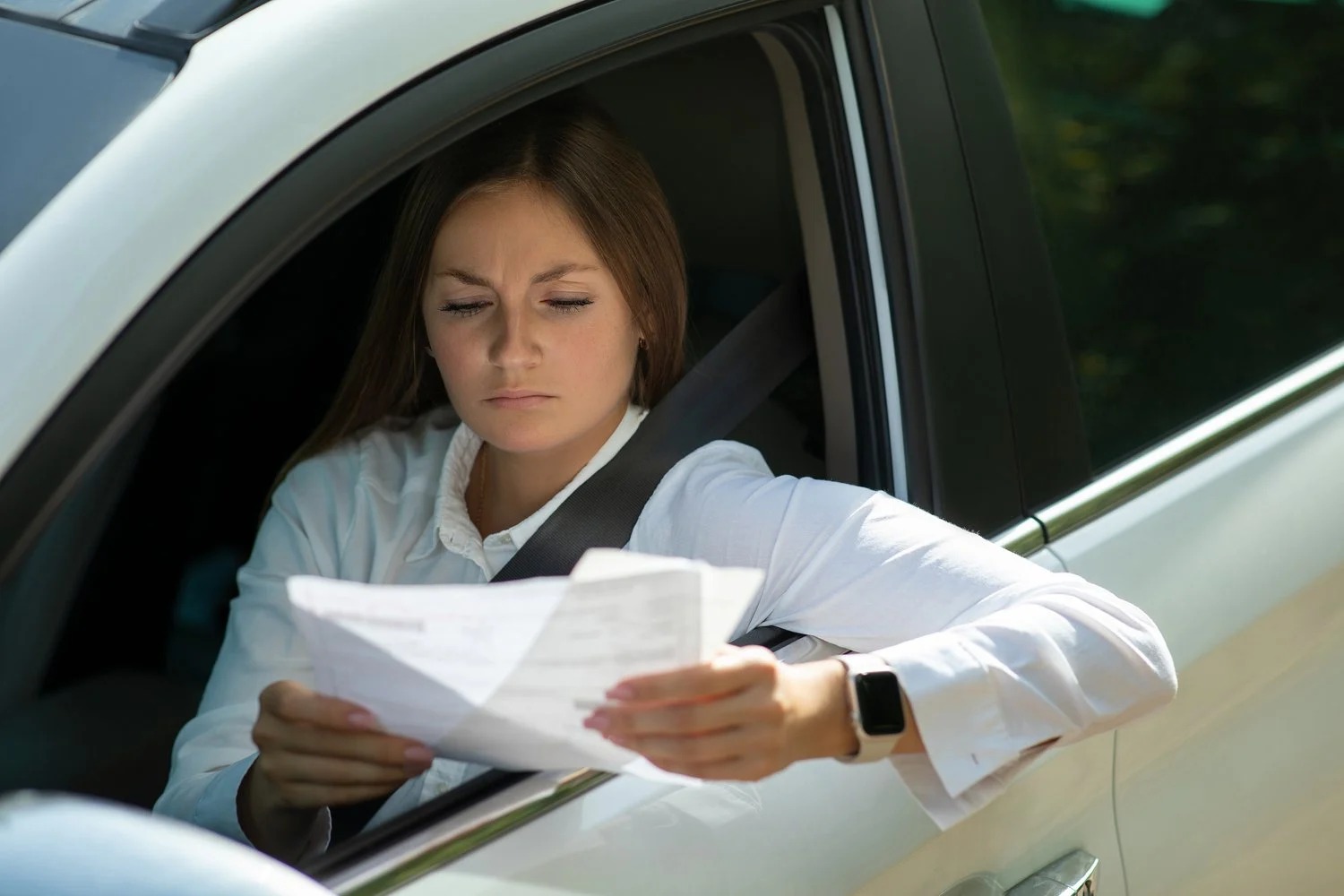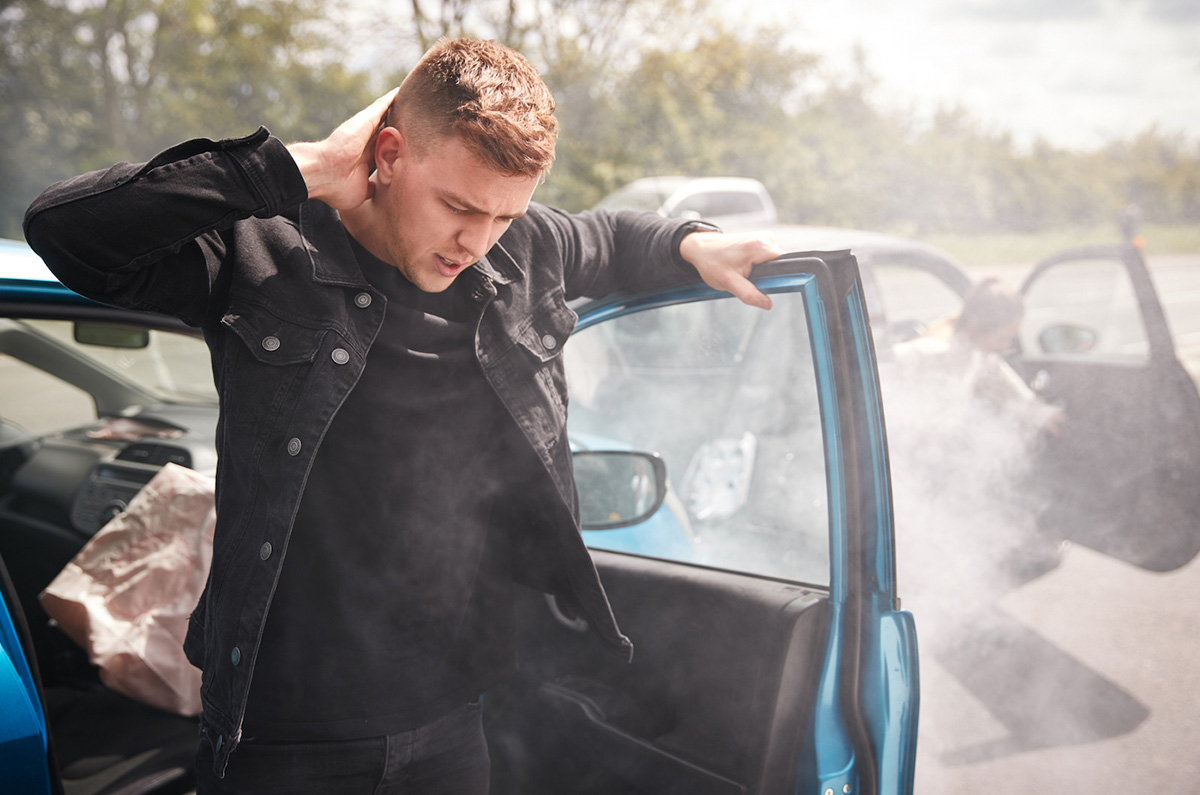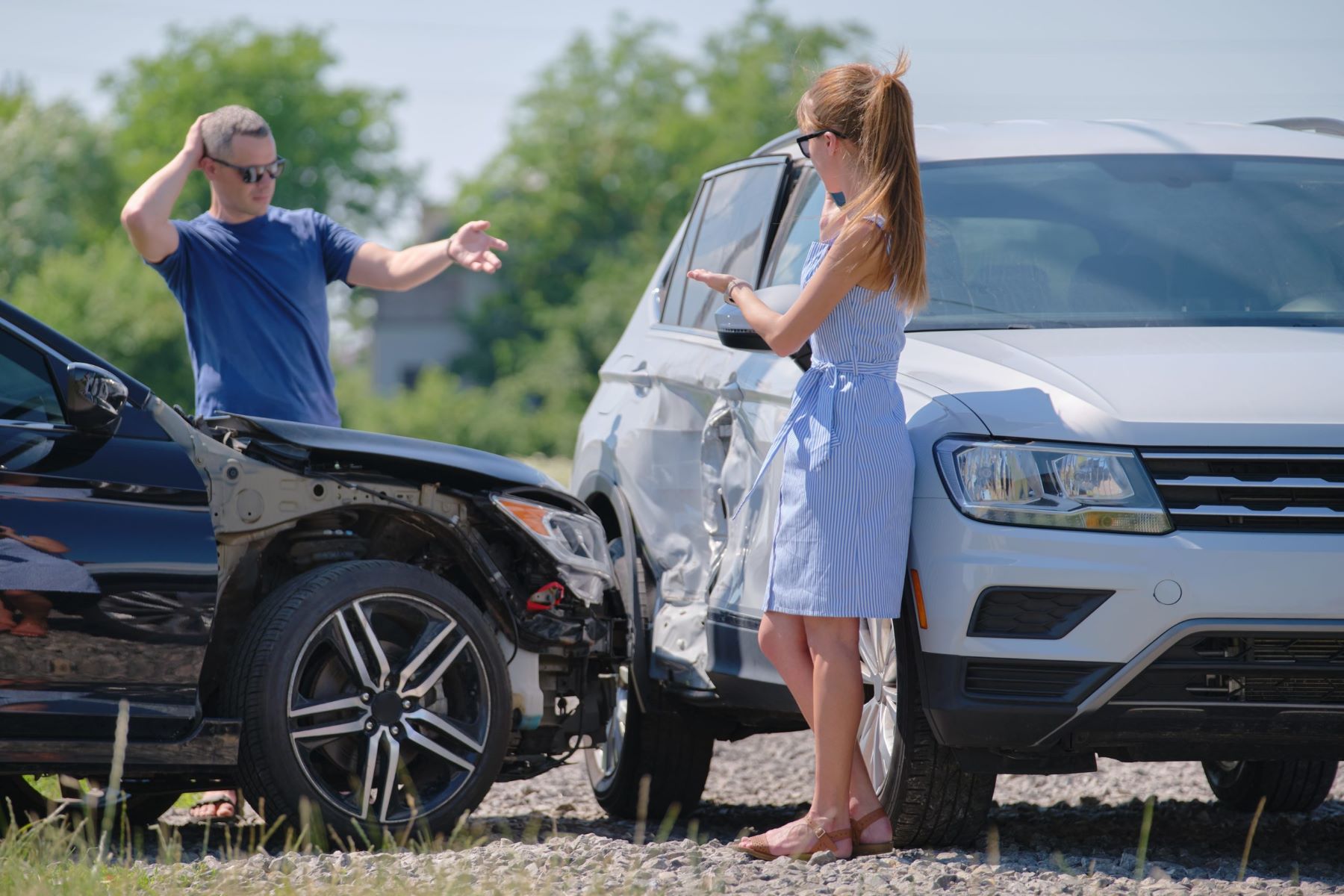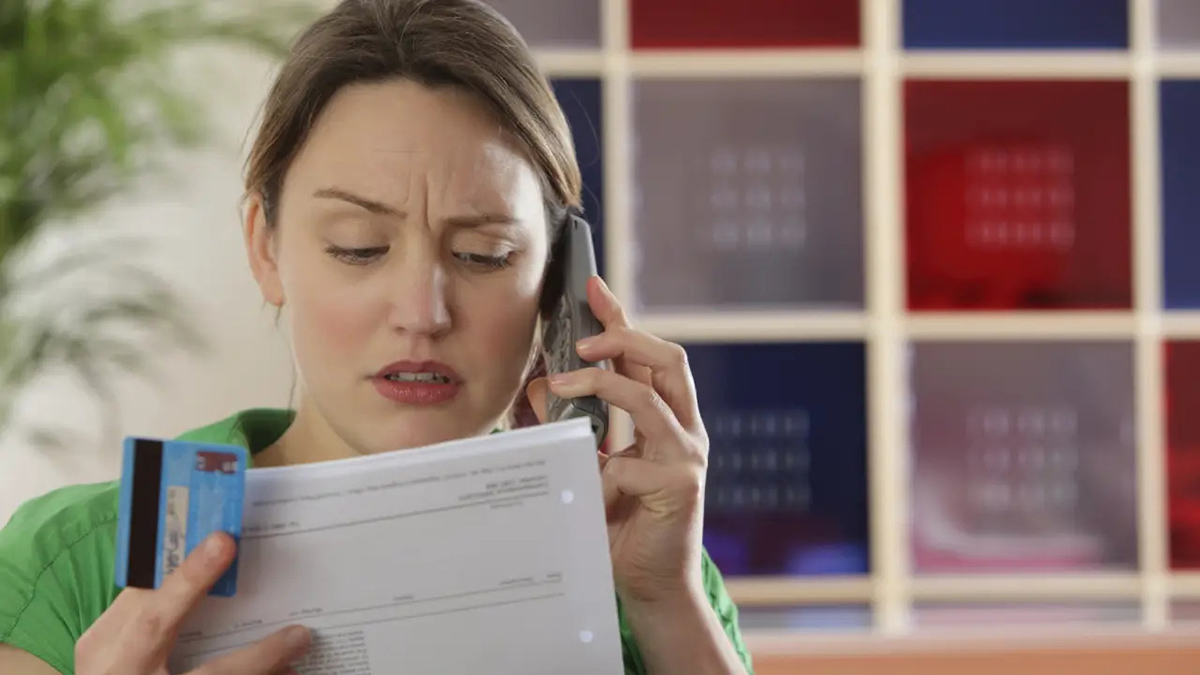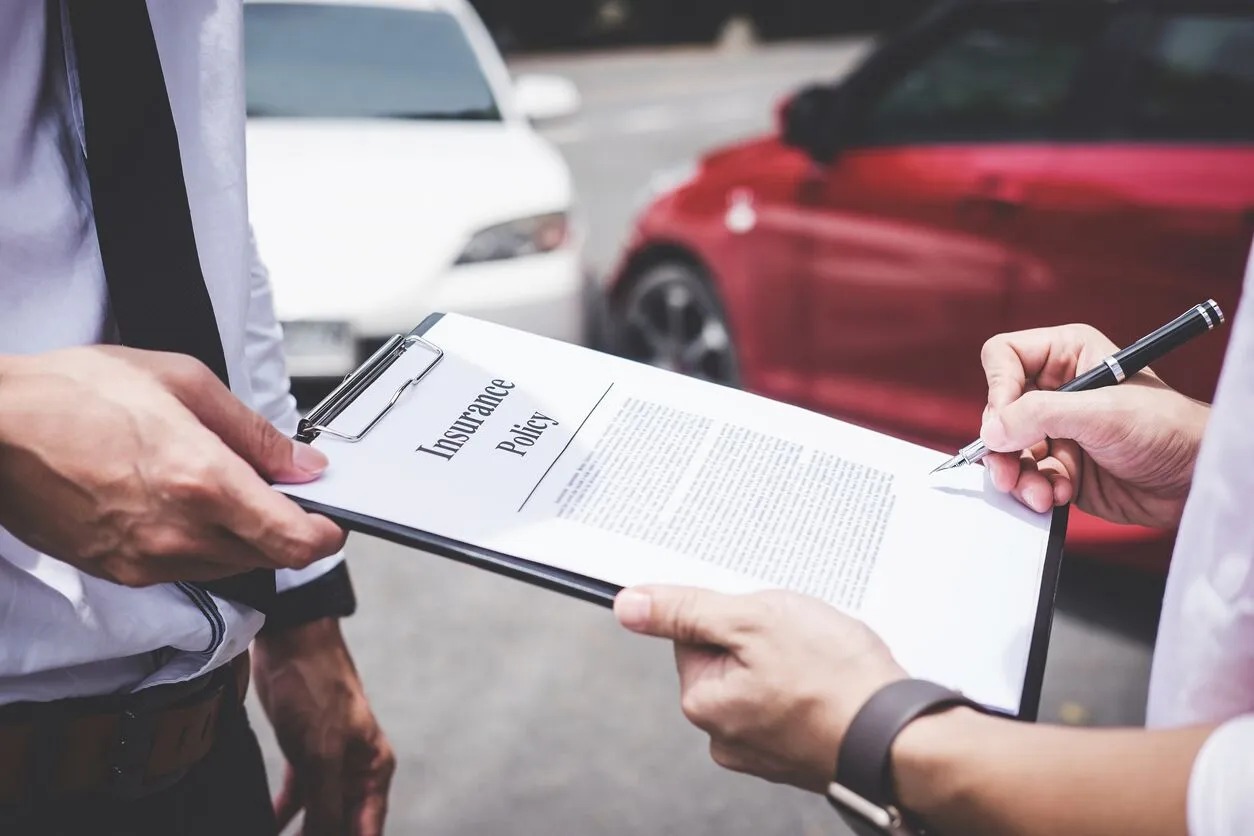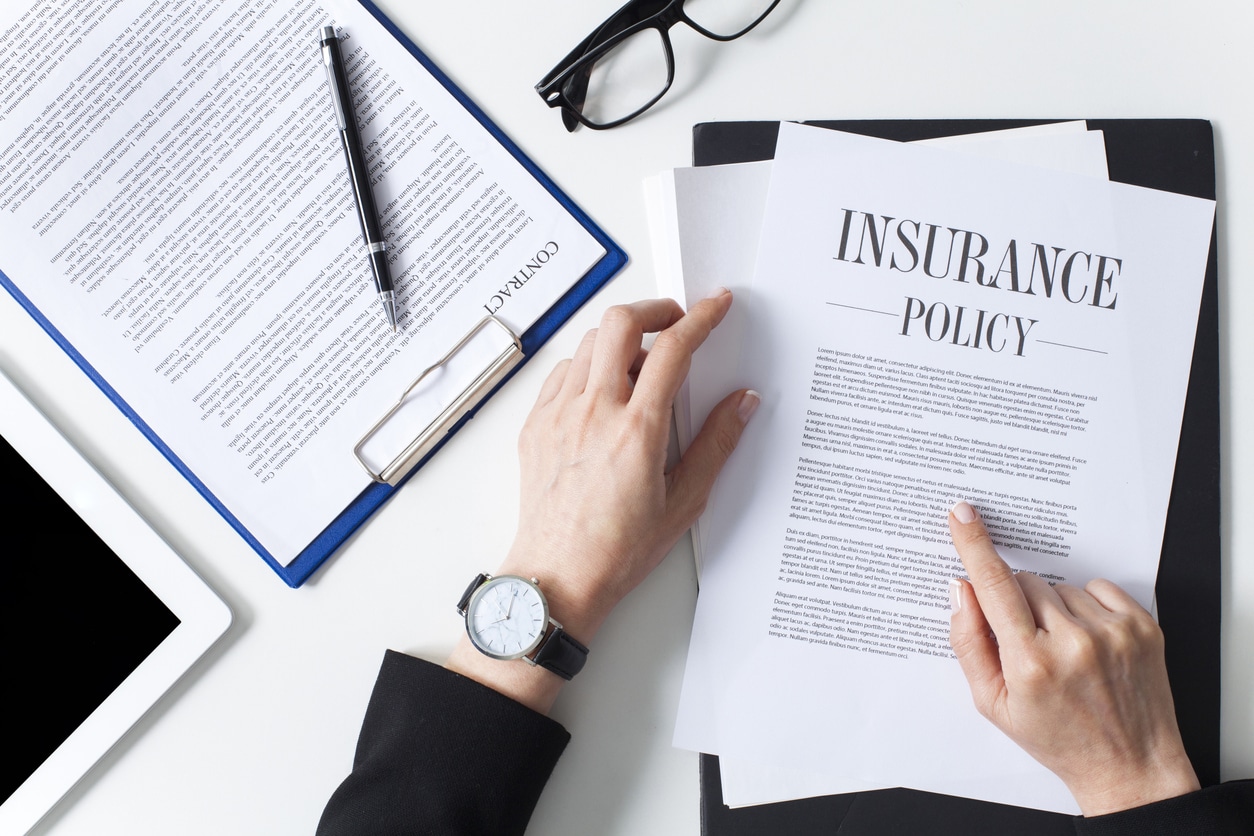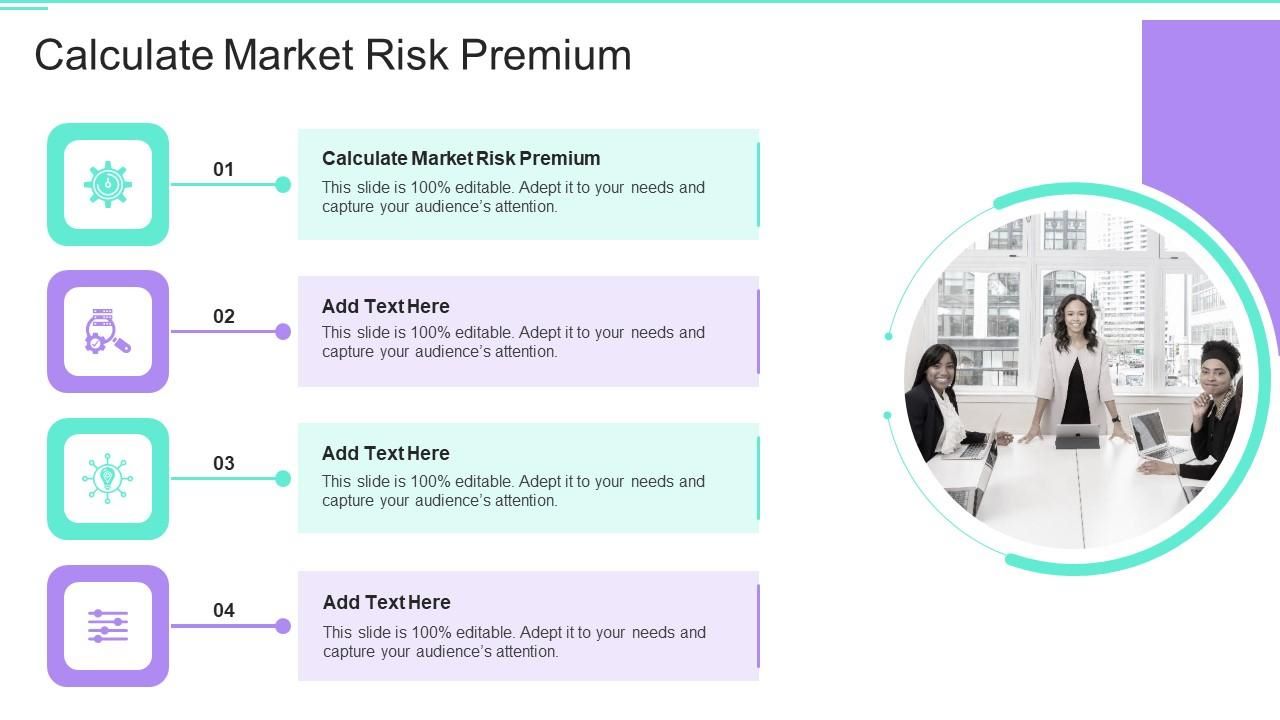Home>Finance>What Happens If Someone Who Isn’t On Your Insurance Crashes Your Car Geico?
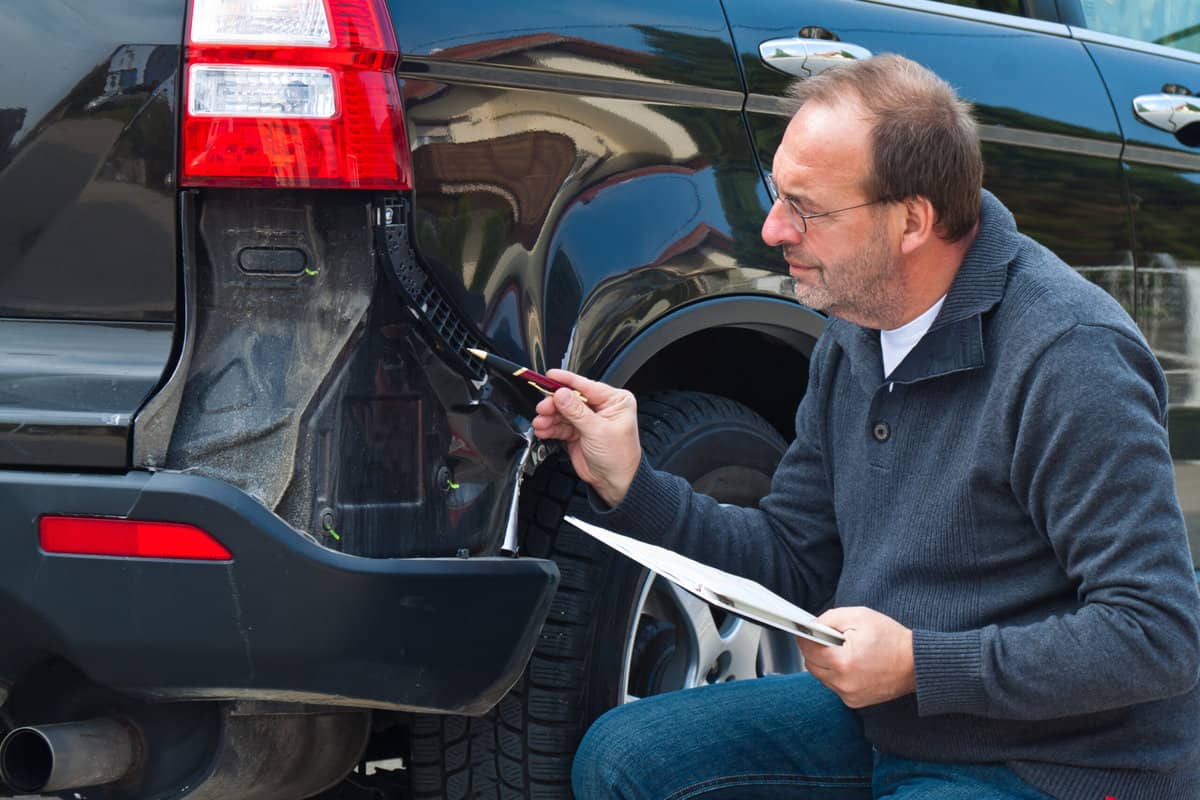

Finance
What Happens If Someone Who Isn’t On Your Insurance Crashes Your Car Geico?
Published: November 12, 2023
Discover the financial implications when someone not on your insurance crashes your car with GEICO. Protect your finances with comprehensive coverage.
(Many of the links in this article redirect to a specific reviewed product. Your purchase of these products through affiliate links helps to generate commission for LiveWell, at no extra cost. Learn more)
Table of Contents
- Introduction
- Understanding Auto Insurance Coverage
- Who is Covered Under Your Auto Insurance Policy?
- Coverage for Non-Listed Drivers
- What Happens if Someone Not on Your Insurance Crashes Your Car?
- Reporting the Accident to Your Insurance Provider
- Insurance Coverage for Rental Cars
- Steps to Take to Protect Yourself and Your Vehicle
- Conclusion
Introduction
When it comes to auto insurance, understanding who is covered under your policy is crucial. But what happens if someone who isn’t listed on your insurance is involved in an accident while driving your car? This is a common concern for many policyholders, especially when lending their vehicles to friends or family members.
Auto insurance provides coverage for damages and injuries resulting from accidents, but the specifics can vary depending on the terms of your policy. In this article, we will explore what happens if someone who isn’t on your insurance crashes your car and how it may affect your coverage.
It is important to note that the following information is general in nature and may not apply to all insurance providers or policies. It is always recommended to review your specific policy and consult with your insurance agent for personalized advice.
Now, let’s dive into the details of auto insurance coverage and how it relates to non-listed drivers.
Understanding Auto Insurance Coverage
Before delving into the specifics of coverage for non-listed drivers, it’s essential to have a solid understanding of how auto insurance works. Auto insurance is designed to protect you financially in the event of an accident, providing coverage for damages to your vehicle, medical expenses, and liability for injuries or damages to others.
There are several types of auto insurance coverage you can choose from, including:
- Liability coverage: This covers the costs associated with injuries or damages you cause to others in an accident.
- Collision coverage: This covers damages to your vehicle resulting from a collision with another vehicle or object.
- Comprehensive coverage: This covers damages to your vehicle caused by factors other than a collision, such as theft, vandalism, or natural disasters.
- Medical payments coverage: This covers medical expenses for you and your passengers in the event of an accident.
- Uninsured/underinsured motorist coverage: This provides coverage if you are involved in an accident with an uninsured or underinsured driver.
Each of these coverages comes with its own limits and deductibles, which may vary depending on your insurance provider and the specific terms of your policy. It’s essential to review your policy carefully to understand the extent of your coverage.
Now that we have a basic understanding of auto insurance coverage, let’s explore who is typically covered under your policy.
Who is Covered Under Your Auto Insurance Policy?
Under a typical auto insurance policy, coverage extends to the named insured, which is usually the primary vehicle owner. The named insured is typically the person who purchases the policy and is listed on the insurance documents. Additionally, immediate family members who reside in the same household as the named insured are often automatically covered under the policy.
Immediate family members commonly covered under an auto insurance policy include:
- Spouse or domestic partner
- Children
- Siblings
- Parents
- Other relatives who live in the same household
It’s important to note that the specifics of who is covered may vary depending on the insurance provider and the terms of your policy. Some policies may limit coverage to only those listed on the policy, while others may extend coverage to occasional drivers or drivers with permission.
If you frequently lend your vehicle to friends or non-family members, it’s crucial to review your policy and check with your insurance provider to ensure that they are covered under your policy or have their own adequate insurance coverage.
Now that we understand who is typically covered under an auto insurance policy, let’s explore what happens if someone who isn’t on your insurance crashes your car.
Coverage for Non-Listed Drivers
When it comes to coverage for non-listed drivers, the rules and policies can vary depending on your insurance provider and the terms of your auto insurance policy. In general, if you allow someone who isn’t listed on your insurance policy to drive your car on an occasional basis, they may still be covered under your policy.
Insurance providers often extend coverage to non-listed drivers as long as they have your permission to use the vehicle. However, it’s important to note that coverage for these drivers may be limited compared to the coverage provided to the named insured and listed drivers.
Some key points to consider regarding coverage for non-listed drivers include:
- Policy Terms: Review your policy carefully to understand the specific language and terms relating to coverage for non-listed drivers. Some policies may have exclusions or limitations regarding coverage for drivers who are not listed.
- Permissive Use: Many auto insurance policies have provisions for permissive use, which means that as long as you give someone permission to drive your vehicle, they will be covered by your policy. However, if they are driving your vehicle on a regular basis or have regular access to it, they may need to be listed on your policy as an additional driver.
- Individual Circumstances: Insurance providers may consider factors such as the driver’s age, driving history, and relationship to the primary insured when determining coverage for non-listed drivers.
It’s important to note that if a non-listed driver causes an accident while driving your vehicle, it may still affect your insurance premiums and claims history. Your insurance provider might take into account the accident and the driver’s involvement when determining future premiums.
Understanding the coverage available for non-listed drivers is essential to ensure that you are adequately protected in the event of an accident. It is always best to consult with your insurance provider to clarify the specific terms and conditions of your policy.
Next, let’s explore what happens if someone who isn’t on your insurance crashes your car.
What Happens if Someone Not on Your Insurance Crashes Your Car?
If someone who is not listed on your auto insurance policy crashes your car, the aftermath can be stressful and confusing. However, the specific outcome will depend on various factors, including your insurance policy, the driver’s insurance coverage (if any), and the circumstances of the accident.
Here are some possible scenarios that may occur:
- Using Your Insurance Coverage: In some cases, your own auto insurance policy may provide coverage for the accident, even if the driver is not listed. If you have permissive use coverage, which typically extends coverage to occasional drivers with your permission, your policy may pay for damages and injuries resulting from the accident. However, keep in mind that this may depend on the terms and conditions of your policy, so it’s essential to review your policy carefully or contact your insurance provider to confirm coverage for non-listed drivers.
- Driver’s Insurance Coverage: If the driver who caused the accident has their own auto insurance policy, their insurance coverage may come into play. They may be required to file a claim with their insurance provider to cover damages and injuries resulting from the accident. In this case, your insurance company might not be directly involved, but it’s still important to report the accident to your own insurer to fulfill your obligation under your policy.
- No Insurance Coverage: If the driver who crashes your car is uninsured or underinsured, the situation can be more complicated. In such cases, your own auto insurance policy may come into play through uninsured/underinsured motorist coverage. This coverage is designed to protect you in situations where the at-fault driver doesn’t have sufficient insurance to cover the damages. It’s essential to review your policy to understand the specifics of your uninsured/underinsured motorist coverage and how it applies to non-listed drivers.
Regardless of the coverage situation, it’s crucial to promptly report the accident to your insurance provider. Even if you believe the driver is at fault and should be responsible, notifying your insurance company allows them to investigate the accident and protect your interests. Failure to report the accident within the specified time frame stated in your policy could result in a denial of coverage.
Remember, each insurance policy is unique, and the exact outcome will depend on your specific circumstances. It’s always recommended to contact your insurance provider or agent to understand the extent of coverage and steps to take in the event of an accident involving a non-listed driver.
Next, let’s discuss the importance of reporting the accident to your insurance provider.
Reporting the Accident to Your Insurance Provider
Whether the driver who crashed your car is listed on your insurance policy or not, it is vital to report the accident to your insurance provider as soon as possible. Failing to report the accident promptly could result in a denial of coverage and potential complications in the claims process.
Here are the steps you should take when reporting the accident to your insurance provider:
- Contact Your Insurance Company: Reach out to your insurance company as soon as possible after the accident. Follow the instructions provided by your insurer on how to report the incident. Be prepared to provide details such as the date, time, location of the accident, and the names and contact information of all parties involved.
- Provide Accurate Information: When reporting the accident, ensure that you provide accurate and complete information about the incident. Cooperate fully with your insurance company’s investigation and provide any requested documentation or evidence.
- Document the Incident: Take photos of the damage to your vehicle and any other vehicles involved in the accident. If there are any visible injuries, document them as well. This documentation can help support your claim and provide evidence in case of any disputes.
- Cooperate with the Insurance Adjuster: Your insurance company may assign an adjuster to handle your claim. Cooperate with the adjuster and provide any additional information or documentation they require. Keep in mind that they are working to assess the damages and determine the coverage under your policy.
- Review Your Policy: Take the time to review your insurance policy to understand the coverage you have and any exclusions or limitations that may apply. This knowledge will help you navigate the claims process and ensure that you receive the appropriate compensation.
By promptly reporting the accident to your insurance provider, you fulfill your obligation under your policy and ensure that the claims process can proceed smoothly. Additionally, reporting the accident allows your insurance company to protect your interests, investigate the incident, and handle any potential liability claims.
Next, let’s explore the insurance coverage for rental cars and how it relates to non-listed drivers.
Insurance Coverage for Rental Cars
When it comes to renting a car, understanding your insurance coverage is essential to protect yourself from potential financial liabilities in the event of an accident. In many cases, your existing auto insurance policy may provide coverage for rental cars, but the specifics can vary depending on your policy and insurance provider.
Here are some important points to consider regarding insurance coverage for rental cars:
- Liability Coverage: In most cases, your existing auto insurance policy’s liability coverage extends to rental cars. This means that if you cause an accident while driving a rental car, your liability coverage should help cover the damages and injuries you cause to others.
- Collision and Comprehensive Coverage: Your collision and comprehensive coverage, which typically cover damages to your own vehicle, may extend to rental cars as well. However, it’s essential to check the specifics of your policy, as some policies may have exclusions or limitations for rental vehicles.
- Loss Damage Waiver (LDW) or Collision Damage Waiver (CDW): When renting a car, the rental company may offer you the option to purchase a Loss Damage Waiver or Collision Damage Waiver. These waivers can protect you from being financially responsible for any damages to the rental car. If you already have collision coverage on your auto insurance policy, you may not need to purchase this additional coverage. Check your policy beforehand to avoid duplicating coverage.
- Personal Injury Protection (PIP) or Medical Payments Coverage: Your PIP or Medical Payments coverage may also extend to injuries sustained in a rental car accident. This coverage can help with medical expenses for you and your passengers.
- Credit Card Coverage: Some credit cards offer rental car insurance coverage as a benefit. However, the coverage provided by credit cards may have limitations and exclusions, so it’s important to review the terms and conditions of your credit card’s rental car insurance coverage.
It’s crucial to contact your insurance provider before renting a car to understand the extent of your coverage. They can provide you with the necessary details and help you determine if additional coverage, such as a Loss Damage Waiver, is necessary.
Remember that rental car insurance requirements and options can vary by location, so it’s always best to do your research and understand the specific requirements and coverage options at your rental destination.
Now that we’ve covered insurance coverage for rental cars, let’s discuss the important steps you should take to protect yourself and your vehicle.
Steps to Take to Protect Yourself and Your Vehicle
When it comes to protecting yourself and your vehicle, there are several important steps you can take, especially when it comes to lending your car to someone who isn’t on your insurance policy or renting a vehicle. These steps can help minimize risks and ensure that you are adequately protected in the event of an accident.
Here are some key steps to consider:
- Review Your Auto Insurance Policy: Take the time to review your auto insurance policy to understand the coverage it provides, including coverage for non-listed drivers and rental cars. Be aware of any limitations, exclusions, or additional coverage options that may be necessary.
- Communicate with Your Insurance Provider: If you frequently lend your car to friends or family members, inform your insurance provider about these drivers and ensure they are properly covered under your policy or have their own adequate insurance coverage. This will help avoid gaps in coverage in the event of an accident.
- Consider Additional Coverage: If you anticipate lending your car to non-listed drivers frequently, it may be worth considering adding them to your policy as additional drivers or exploring other coverage options to ensure adequate protection in case of an accident.
- Read Rental Car Agreements Carefully: When renting a car, thoroughly read and understand the rental car agreement. Pay close attention to the insurance coverage offered by the rental company and determine if additional coverage is necessary or if your existing auto insurance policy provides sufficient coverage.
- Document Pre-Existing Damage: Before driving a rental car, carefully inspect it for any pre-existing damage. Take photos or videos of the vehicle from various angles to document its condition. This will help prevent disputes regarding damages when returning the vehicle.
- Drive Responsibly: Encourage all drivers, whether they are listed on your insurance policy or not, to drive responsibly and follow all traffic laws to minimize the risk of accidents or claims that could impact your insurance coverage.
- Report Accidents Promptly: If an accident occurs, whether it involves a non-listed driver or a rental car, report it to your insurance provider promptly. Failure to report an accident within the specified timeframe stated in your policy could result in a denial of coverage.
- Seek Professional Advice: If you have any questions or concerns about insurance coverage for non-listed drivers or rental cars, don’t hesitate to consult with your insurance provider or reach out to an insurance professional for guidance. They can provide personalized advice based on your specific circumstances.
By following these steps, you can take proactive measures to protect yourself and your vehicle, ensuring that you have the necessary insurance coverage in place and minimizing potential risks in the event of an accident.
Next, let’s conclude our discussion on what happens when someone who isn’t on your insurance policy crashes your car.
Conclusion
Understanding auto insurance coverage is crucial, especially when it involves non-listed drivers or rental cars. While specific policies and coverage options may vary, there are key principles to keep in mind to protect yourself and your vehicle.
First, familiarize yourself with your auto insurance policy and its terms. Determine who is covered under your policy, whether additional coverage is needed for non-listed drivers, and the extent of coverage for rental cars.
In the event someone not on your insurance crashes your car, the outcome will depend on your policy and the driver’s insurance coverage. Promptly report the accident to your insurance provider, providing accurate details and any necessary documentation.
Be proactive in protecting yourself and your vehicle by following best practices such as regularly reviewing your policy, communicating with your insurance provider, and driving responsibly. When renting a car, carefully read the rental agreement, document pre-existing damages, and make informed decisions regarding additional coverage.
If you have any questions or concerns, don’t hesitate to seek professional advice from your insurance provider or an insurance professional who can guide you based on your specific situation.
Remember, the information provided in this article is general in nature and may vary depending on your policy and insurance provider. Always review your policy and consult with your insurance provider for personalized advice.
By having a solid understanding of your auto insurance coverage, you can drive with confidence and ensure you are adequately protected in the event of any accidents involving non-listed drivers or rental cars.
